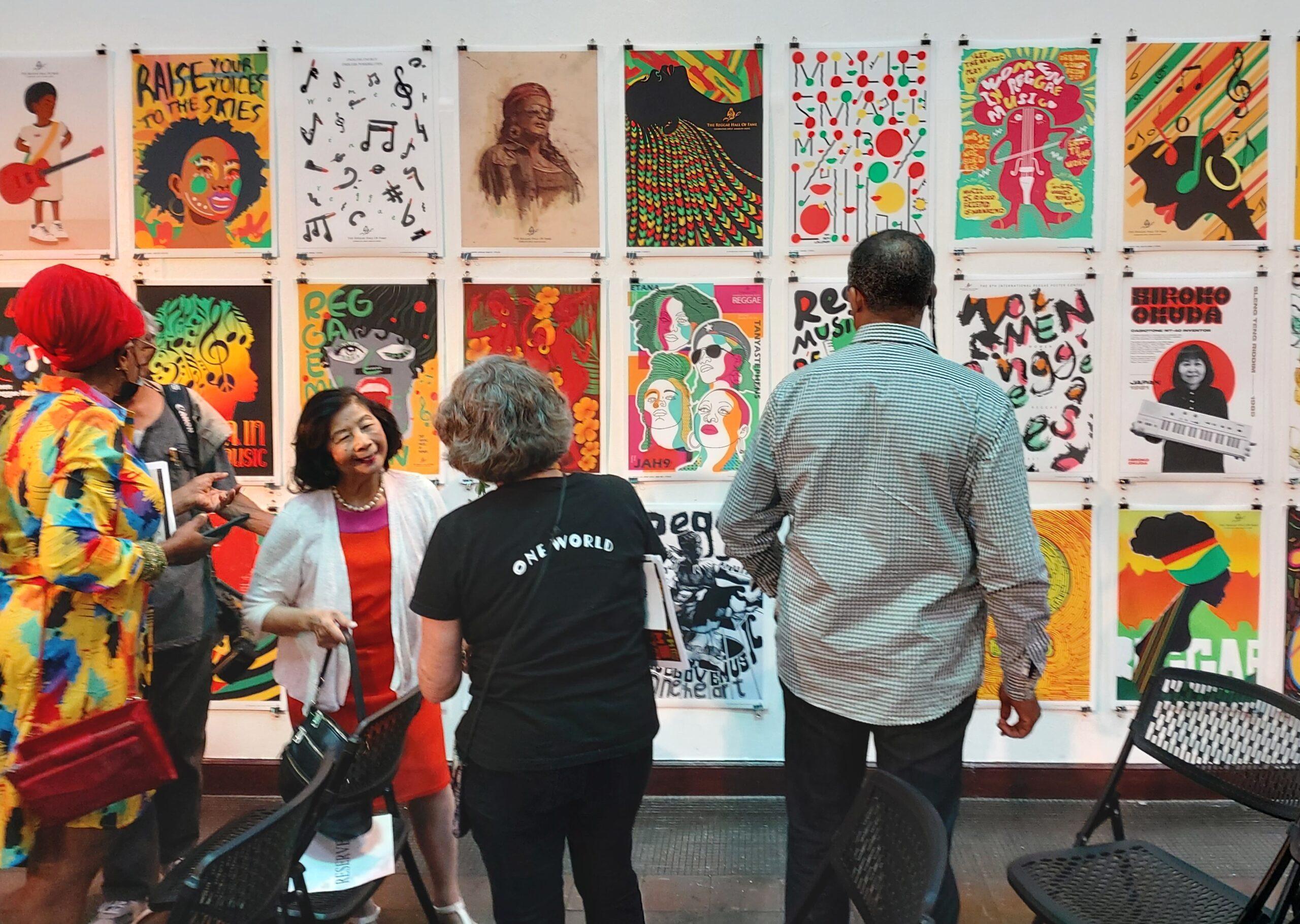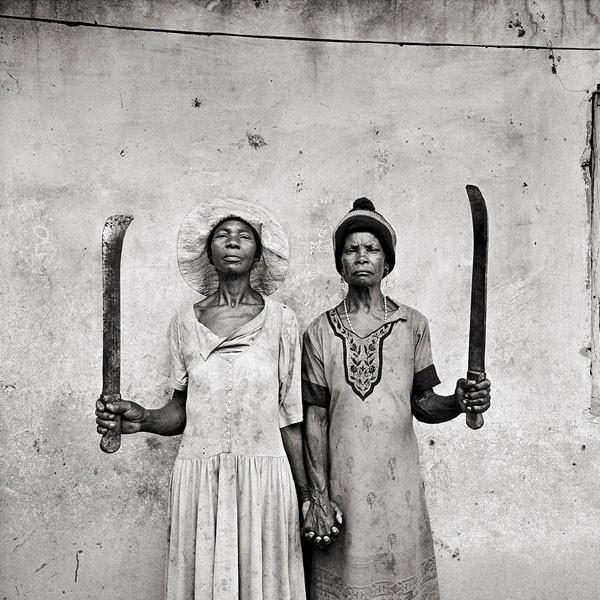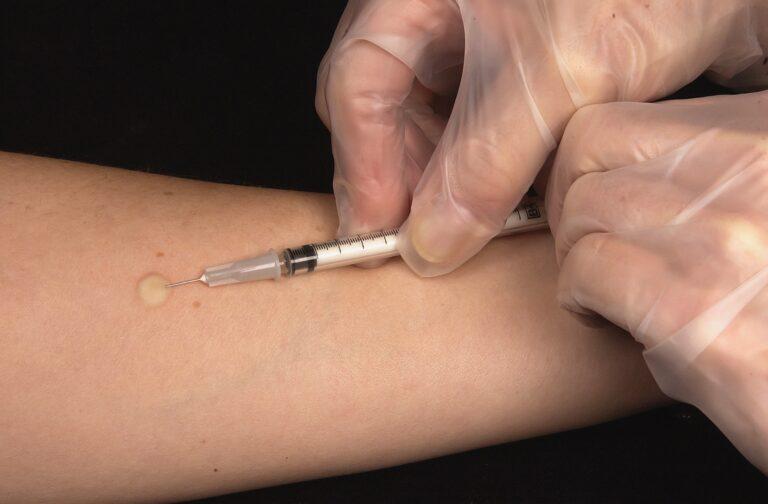The Art of Reggae exhibition at the National Gallery-Part 1


The Art of Reggae exhibition, which features the top 100 winners of the 2022 International Reggae Poster Contest, opened on Sunday 19 February at the National Gallery of Jamaica (NGJ), as part of that institution’s Reggae Month programming. It is the third time that the top-100 winners of this contest, are being shown at the NGJ, with the first exhibition in 2012 and the second in 2019. For the current edition of the contest, which has been held eight times thus far, there were 1,180 entries by 653 artists from 53 countries. These are impressive statistics that certainly reflect and pay tribute to the global reach of Jamaica’s music culture.
The International Reggae Poster Contest was launched in 2011 as the brainchild of the late Jamaican, US-based poster artist and designer Michael Thompson “Freestylee”. He conceived of the poster competition as a platform to promote the establishment of a Reggae Hall of Fame on the Kingston Waterfront that would pay tribute to the greats of the genre, for which he had even identified the ideal architect, Frank Gehry. It was a romantic vision, quite different from the more scholarly and didactic Jamaica Music Museum that was being developed by the Jamaican Government, and Thompson was obviously inspired by the cultural and urban renewal effect of Gehry’s Guggenheim Museum branch in Bilbao, Spain. He also conceived the contest as a fundraiser to support the Alpha Boys School, in tribute to that school’s seminal role in the development of Jamaican music, and supported the school in various other ways, for instance contributing its distinctive new logo. Thompson passed away unexpectedly in 2016 but the project is continued by its co-founder, the Greek designer Maria Papaefstathiou, and Jamaica’s cultural scholar Carolyn Cooper.
These worthwhile goals notwithstanding, there are several critical questions that arise from the contest. One recurrent issue has been the lack of participation by Jamaican designers, despite the obvious local awareness of the initiative. For instance, there were only three Jamaican submissions in the current edition, and none made it to the final 100. This has, with one or two exceptions, been a feature of all the International Reggae Poster Contests thus far. It is certainly remarkable that designers in reggae’s country of origin are not interested in participating. I believe that the reasons, perhaps surprisingly, are both cultural and political.
The poster, as an art form, has been used in many parts of the world as a democratic, accessible vehicle for political propaganda, social commentary and cultural activism, with the Cuban and Puerto Rican poster traditions as two prime examples in the Caribbean region. Poster activism has gained a new global circuit with digital design and social media, with the widely circulated political and human rights posters of the American artist Shepard Fairey as the best-known example. Michael Thompson was an active participant in this online community, and he regularly “dropped” digital posters in response to international events and issues, including the Tivoli Gardens incursion. This poster activism culture, which is the foundation on which the International Reggae Poster Contest builds, does not, however, have a strong foothold in Jamaica, which has used different media and formats, such as street art and graffiti, for such social and cultural messages.
The Reggae Poster Contest is furthermore part of a global circuit of international poster competitions, which many designers regard as a way to gain broader professional exposure and to foster professional networks. The local design community is however averse to “spec work” (or speculative work) that does not guarantee professional remuneration and where the designer may have to surrender part or all of the copyright, which can indeed be exploitative. The Jamaica Design Association opposes and even boycotts design competitions on that basis. This view is not unique to Jamaica but having a hardened position on this count may not be productive, as speculative and pro bono work are common and, indeed, beneficial in many professions, graphic design included. There are many instances where design competitions are entirely justified and not at all exploitative. The Reggae Poster Contest, which has a charitable agenda, does not call for designs that could otherwise be directly commissioned, is arguably one such instance.
But there are other, perhaps more significant critical considerations. As I argued in my review of the 2019 Art of Reggae exhibition, the troubling subtext of the absence of Jamaican designers from the winning entries is that Jamaica is somehow deemed incapable of representing the culture it has birthed “properly”. The visual culture of reggae has, of course, never been exclusively developed in Jamaica or by Jamaicans. Reggae, itself, was, from early on, a transnational affair, mediated by migration, and counter-cultural and resistance movements in various parts of the world, as well as the marketing machinery and profit-making imperatives of the international music industry. Many of the best-known reggae album covers were, for instance, authored by English, American and other illustrators, photographers, and graphic designers, with the cultural expectations of Euro-American audiences in mind.
The visual culture of reggae is the product of a complex, contradictory and sometimes problematic dialogue between how Jamaica imagines itself, and how it is imagined by others, with all sorts of cross-cultural translations in the process. Its visual expressions are also negotiated between the formal world of graphic design, and a local popular visual culture that is blissfully indifferent to established design principles: the world of hand-painted dancehall signs and other such informal visual expressions.
At its best, the International Reggae Poster Contest celebrates and builds on these generative dialogues; at its worst, it contributes to the routinization of reggae’s visual imaginary, in a way which is increasingly disconnected from its roots and original cultural politics. Repetitiveness and predictability were already evident in the inaugural exhibition, and these issues were overwhelming in the 2019 edition. Many of the posters in that year’s exhibition reflected a shallow, exoticized and formulaic vision of reggae and Jamaican culture, awash with more exhortations for “One Love” and “world peace” than the average beauty queen pageant. Part of the problem is, of course, that many participants in the contest do not seem to have any real history with, or sustained interest in, the subject and interpret reggae culture visually for the sake of participating in the contest only, which is not exactly a recipe for thoughtful or imaginative engagement.
Add to all this that the local music culture and its visual expressions have changed significantly in recent decades, and it may well be that the implied aesthetic and ethos of the International Reggae Poster Contest is simply not appealing to Jamaican designers. Their participation, with innovative designs that challenge the global routinization of reggae culture, may however be needed if the contest is ever to be to re-anchored in contemporary Jamaican culture. It would be interesting to hear from the local design community on that count.
Next week, we will take a closer look at the exhibition and the politics of the opening function.
Dr Veerle Poupeye is an art historian specialized in art from the Caribbean. She works as an independent curator, writer, researcher, and cultural consultant. The second, revised and expanded edition of her best-known book “Caribbean Art” was recently published in the World of Art series of Thames and Hudson. Her personal blog can be found at veerlepoupeye.com.






